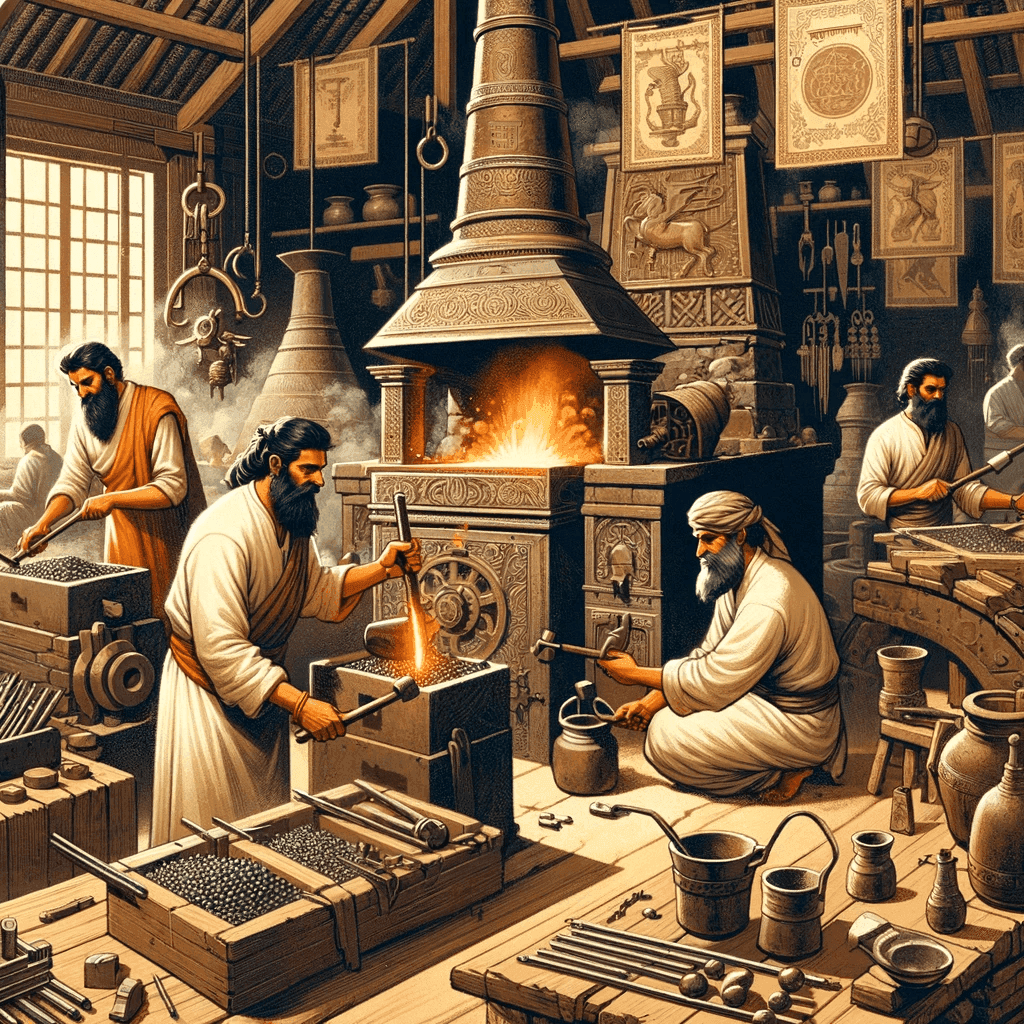Metallurgy in Ancient India: A Legacy of Advanced Steel Production
Ancient India's contributions to metallurgy, particularly in steel production, highlight a remarkable level of technological advancement. The region was known for producing high-quality steel, including the famous 'Damascus steel', prized for its strength and durability.
Information and Other Details

Information on the Discovery
The discovery and development of advanced metallurgical techniques in ancient India are epitomized by the production of high-quality steel. This includes the crafting of the legendary 'wootz' steel, known for its superior hardness and ability to retain a sharp edge.
Story of Indian Metallurgy
The story of Indian metallurgy is a testament to the ingenuity of ancient metallurgists. Their ability to create steel of exceptional quality, without the modern industrial processes, reflects a deep understanding of materials and a mastery of the techniques of smelting and forging.
History of the Discovery
The origins of advanced metallurgy in India can be traced back to as early as the 6th century BCE. However, the most significant advancements were made during the post-Vedic period, with the production of wootz steel around 300 BCE. This high-carbon steel was exported globally and was the precursor to the famous Damascus steel.
Scriptural References and Its Mentions
Ancient Indian texts, including the Arthashastra and various Vedic scriptures, mention the significance of metallurgy and the usage of metals in various aspects of life. These texts offer insights into the historical context of metallurgical practices in ancient India.
Global Influence/Acceptance
Indian steel, particularly wootz, was highly valued in ancient markets. Its fame spread across the Middle East, Europe, and Africa. Damascus blades, made from Indian wootz steel, were renowned for their strength and were highly sought after in the ancient world.
...




